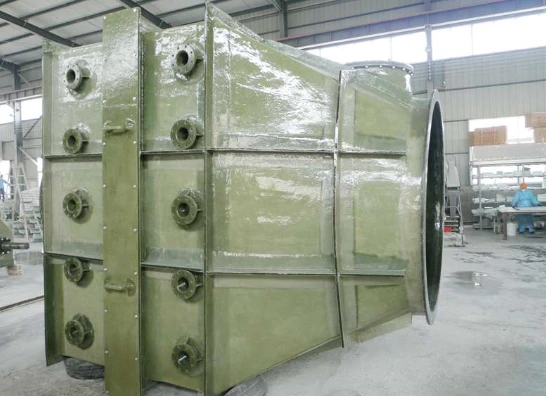
-
 Afrikaans
Afrikaans -
 Albanian
Albanian -
 Amharic
Amharic -
 Arabic
Arabic -
 Armenian
Armenian -
 Azerbaijani
Azerbaijani -
 Basque
Basque -
 Belarusian
Belarusian -
 Bengali
Bengali -
 Bosnian
Bosnian -
 Bulgarian
Bulgarian -
 Catalan
Catalan -
 Cebuano
Cebuano -
 China
China -
 China (Taiwan)
China (Taiwan) -
 Corsican
Corsican -
 Croatian
Croatian -
 Czech
Czech -
 Danish
Danish -
 Dutch
Dutch -
 English
English -
 Esperanto
Esperanto -
 Estonian
Estonian -
 Finnish
Finnish -
 French
French -
 Frisian
Frisian -
 Galician
Galician -
 Georgian
Georgian -
 German
German -
 Greek
Greek -
 Gujarati
Gujarati -
 Haitian Creole
Haitian Creole -
 hausa
hausa -
 hawaiian
hawaiian -
 Hebrew
Hebrew -
 Hindi
Hindi -
 Miao
Miao -
 Hungarian
Hungarian -
 Icelandic
Icelandic -
 igbo
igbo -
 Indonesian
Indonesian -
 irish
irish -
 Italian
Italian -
 Japanese
Japanese -
 Javanese
Javanese -
 Kannada
Kannada -
 kazakh
kazakh -
 Khmer
Khmer -
 Rwandese
Rwandese -
 Korean
Korean -
 Kurdish
Kurdish -
 Kyrgyz
Kyrgyz -
 Lao
Lao -
 Latin
Latin -
 Latvian
Latvian -
 Lithuanian
Lithuanian -
 Luxembourgish
Luxembourgish -
 Macedonian
Macedonian -
 Malgashi
Malgashi -
 Malay
Malay -
 Malayalam
Malayalam -
 Maltese
Maltese -
 Maori
Maori -
 Marathi
Marathi -
 Mongolian
Mongolian -
 Myanmar
Myanmar -
 Nepali
Nepali -
 Norwegian
Norwegian -
 Norwegian
Norwegian -
 Occitan
Occitan -
 Pashto
Pashto -
 Persian
Persian -
 Polish
Polish -
 Portuguese
Portuguese -
 Punjabi
Punjabi -
 Romanian
Romanian -
 Russian
Russian -
 Samoan
Samoan -
 Scottish Gaelic
Scottish Gaelic -
 Serbian
Serbian -
 Sesotho
Sesotho -
 Shona
Shona -
 Sindhi
Sindhi -
 Sinhala
Sinhala -
 Slovak
Slovak -
 Slovenian
Slovenian -
 Somali
Somali -
 Spanish
Spanish -
 Sundanese
Sundanese -
 Swahili
Swahili -
 Swedish
Swedish -
 Tagalog
Tagalog -
 Tajik
Tajik -
 Tamil
Tamil -
 Tatar
Tatar -
 Telugu
Telugu -
 Thai
Thai -
 Turkish
Turkish -
 Turkmen
Turkmen -
 Ukrainian
Ukrainian -
 Urdu
Urdu -
 Uighur
Uighur -
 Uzbek
Uzbek -
 Vietnamese
Vietnamese -
 Welsh
Welsh -
 Bantu
Bantu -
 Yiddish
Yiddish -
 Yoruba
Yoruba -
 Zulu
Zulu
Durable Fiberglass Stack Liners for Enhanced Performance and Longevity in Industrial Applications
The Importance of Fiberglass Stack Liners in Modern Industry
Fiberglass stack liners have emerged as a crucial component in various industrial applications, particularly in the field of environmental management and pollution control. As industries strive to comply with stricter environmental regulations and improve operational efficiency, the role of advanced materials such as fiberglass becomes increasingly significant. This article explores the characteristics, advantages, and applications of fiberglass stack liners, shedding light on their importance in modern industrial processes.
Understanding Fiberglass Stack Liners
Fiberglass stack liners are specialized liners made from reinforced polymer composites, primarily composed of glass fibers and resin. These materials are engineered to withstand harsh environmental conditions, making them ideal for use in smokestacks and exhaust systems. The lightweight yet durable nature of fiberglass allows for easy installation and maintenance, which are critical factors for industrial operations that demand constant monitoring and performance optimization.
Key Advantages of Fiberglass Stack Liners
1. Corrosion Resistance One of the most significant benefits of fiberglass stack liners is their resistance to corrosion. Traditional materials such as steel and concrete are prone to deterioration due to chemical exposure, high temperatures, and moisture. Fiberglass, on the other hand, remains unaffected by these conditions, ensuring longevity and reducing the frequency of repairs or replacements.
2. High Temperature Resistance Fiberglass can withstand high temperatures often found in exhaust systems. With continuous exposure to hot gases, the integrity of stack liners is vital to maintain operational efficiency. Fiberglass liners can operate effectively at temperatures up to 500°F (260°C) without compromising their structural integrity, making them a preferred choice in industries such as power generation and manufacturing.
3. Lightweight Design The lightweight nature of fiberglass simplifies the installation process significantly. Unlike heavier materials that require specialized handling equipment and extensive labor, fiberglass stack liners can often be installed with basic tools, leading to reduced labor costs and increased operational efficiency.
fiberglass stack liner

4. Reduced Maintenance Costs The durability and resilience of fiberglass result in lower maintenance requirements over time. Industries often face high costs associated with downtime and maintenance, but the longevity of fiberglass liners mitigates this issue. Fewer repairs translate to less unplanned downtime and increased productivity.
5. Environmental Benefits As industries grapple with sustainability mandates, fiberglass stack liners offer an eco-friendly solution. Their ability to reduce emissions through improved efficiency can help companies meet stringent environmental regulations, making them an integral part of environmentally responsible operations.
Applications of Fiberglass Stack Liners
The application of fiberglass stack liners spans multiple industries, including power generation, petrochemical, and manufacturing. In power generation, for instance, they are employed to line exhaust stacks, allowing for the safe venting of gases while minimizing corrosion and wear. In the petrochemical industry, fiberglass liners protect against the aggressive chemical environments inherent in processing operations, thereby enhancing safety and efficiency.
Furthermore, fiberglass stack liners play a vital role in retrofitting existing systems, allowing older plants to upgrade their infrastructure without undergoing extensive renovations. This adaptability is crucial for enhancing compliance with modern environmental standards and improving overall system performance.
Conclusion
In summary, fiberglass stack liners represent a significant advancement in industrial materials, providing a range of benefits that enhance efficiency and sustainability. Their unique properties, including corrosion resistance, high-temperature resilience, and lightweight design, make them an invaluable asset in today’s competitive industrial landscape. As more industries turn to innovative solutions to address environmental challenges, fiberglass stack liners will undoubtedly play a pivotal role in driving progress and ensuring compliance with evolving regulations. Investing in high-quality fiberglass stack liners is not just a strategic choice; it is a commitment to sustainable and efficient operations for the future.









